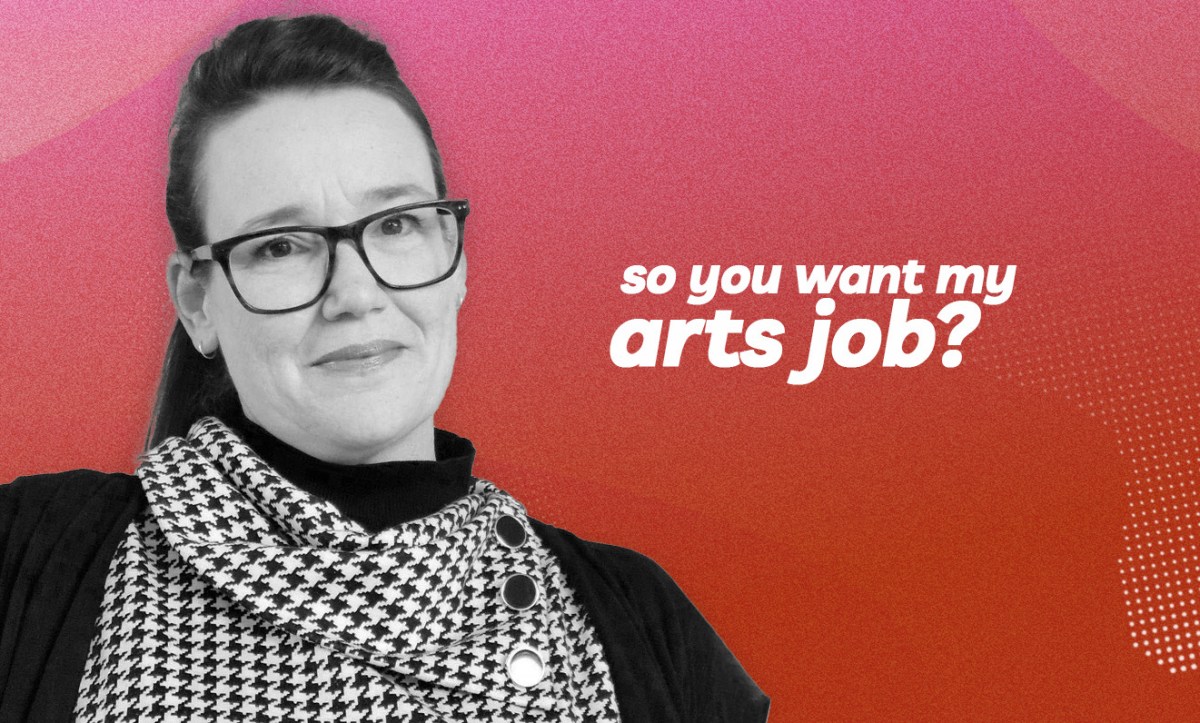Tonya Meyrick is a Senior Lecturer, Screen and Design With the Faculty of Arts and Education, at Melbourne’s Deakin University, with over 25 years of experience and scholarship across Australia, Toronto and London. Meyrick is the Guest Curator of the upcoming Geelong Design Week and sees her role as responsible in driving the success of a regional design festival in Australia’s only UNESCO City of Design.
Meyrick has worked with high-profile clients and partners, including the ABC, National Gallery of Victoria, Disney, Coca-Cola and more.
How would you describe what you do?
In my work across the design industry, I collaborate with local, national and international clients and co-production partners. My practice spans strategic communication design, sustainability, circular economy and user experience design. I support government, corporate and nonprofit organisations, helping them fulfil their communication and strategic design goals.
In design curation, a key part of my work is building stories with communities from diverse fields around key themes and ideas. This year’s Geelong Design Week program showcases these efforts, highlighting themes across the built environment and architecture, circular economy and sustainable practices, and creative work from varied sectors of the design community.
How did you get started in your career?
I’ve been deeply engaged in studio-based art and design from a young age. I rented my first art studio at 16, working at the Salamanca Art Centre in Hobart (Australia) during the 90s. Driven by my passion, I moved to Toronto and later to London, exploring the world as a young creative.
I completed a Bachelor of Fine Arts in Graphic Design from the University of Tasmania’s Centre for Art and Design, which led to freelance work with local businesses.
Read: From film to fatbergs, here are 12 things to check out at Geelong Design Week
I expanded my practice through a Master’s degree at the Victorian College of the Arts, University of Melbourne, focusing on postmodern assemblage with digital technology. I continued with doctoral studies at Swinburne University, researching cultural codes in typography, especially within festival contexts.
Throughout these years, I’ve balanced professional design practice, lecturing and consultancy work.
What’s an average day or week like?
Varied and busy – balancing parenting and family with deadlines, research, meetings, and project and budget management. My days involve venue visits, meeting with stakeholders, designers and creatives, talking with printers and suppliers, and reviewing marketing collateral.
In the lead-up to Geelong Design Week, I am focusing on fine-tuning program listings, responding to public queries and coordinating promotional activities across various channels.
What’s the most common misconception about being a Design Curator?
Much of the work in design curatorship is similar to that of any curator role. My speciality lies in design research, supporting the UN Sustainable Development Goals and the pillars of the City of Greater Geelong Council, while aligning event objectives to deliver a vibrant festival.
This specialist area of work in Australia is emerging, though there are more opportunities in Europe and the US. With the increased visibility of design activities through open processes, design interventions and the exhibiting of design work in gallery and institutional settings, new roles will increase.
A misconception may be about what a curator does and how their role differs depending on the organisation. Working in a large institutional setting involves collaborating with a wider team of specialists and technicians, whereas in a small museum or rural setting, a curator often handles technical and specialist work themselves.
If you were interviewing someone for your job, what skills and qualities would you look for?
The demonstrated ability to work with a variety of stakeholders in different industries, strategic planning and the capacity to define, plan and meet business objectives. Budget and project management skills are essential. I’d look for a people person who can lead and follow, who takes initiative and works methodically through design, industry and business issues to realise high-quality results.
How do you define success in your role?
Success is defined by delivering a cohesive and forward-thinking program that meets the objectives of the UNESCO City of Design designation. This is achieved through audience attendance and sell-out Design Week events, positive testimonials and feedback from attendees, and the desire for more designers, creatives and organisations to be involved.
Over the past few years of my involvement, we have grown our audiences and varied our program focus to ensure we reflect the needs of our community. Meeting these objectives and conducting post-event evaluations helps us measure success.
What’s the best thing happening in your field at the moment?
I am excited to see Australia’s galleries and institutions embrace design-related activities, processes and outcomes as part of what they do, what they collect and what they value in terms of contemporary collections and showcases. Celebrating the brilliant designers and design organisations working on projects that support people and the planet happens readily in other countries and is slowly emerging here as an important thread for audiences.
For more So You Want My Arts Job articles.




